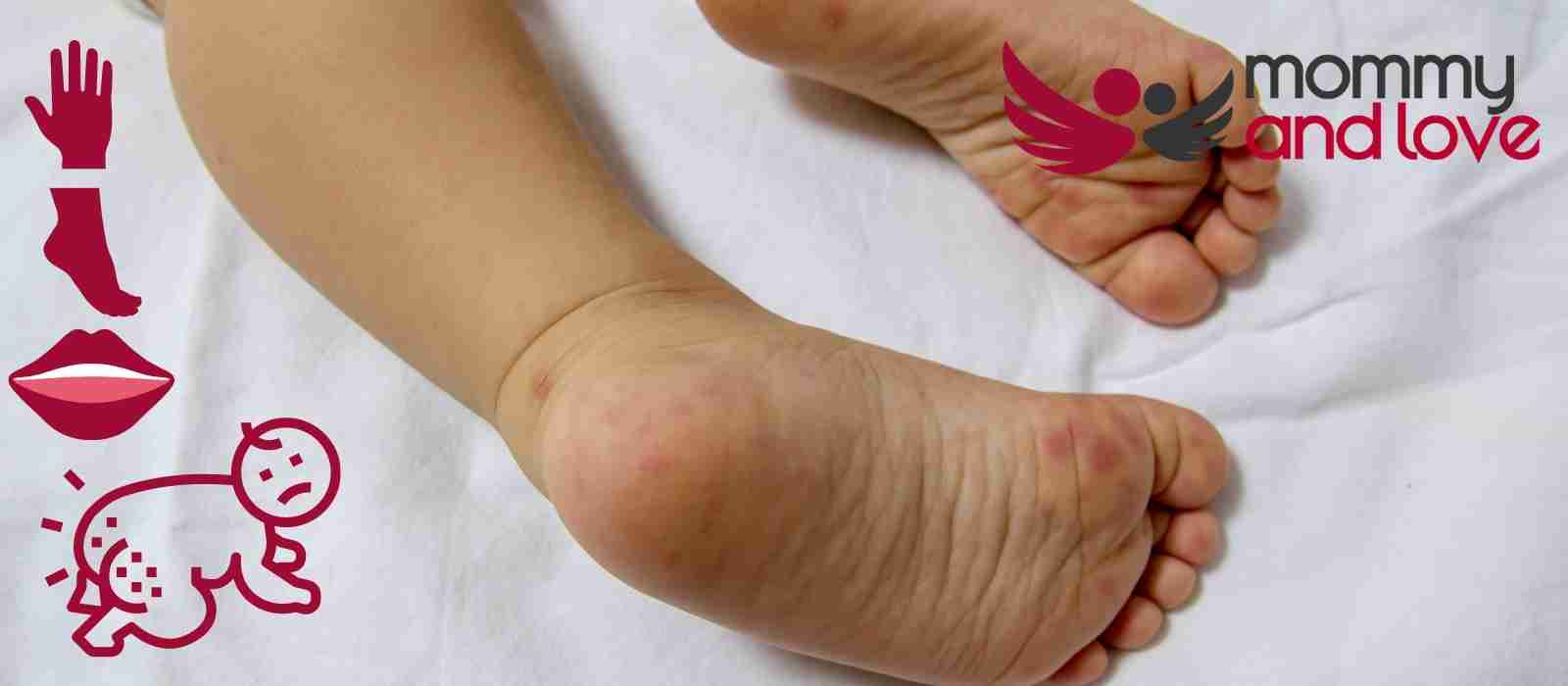Many parents are concerned about the possibility of hand foot and mouth causing rash. In this post, we’ll explore the link between these two conditions and provide some tips on how to protect your baby from potential irritation.
What is hand-foot-and-mouth disease?
An illness called hand-foot-and-mouth disease (HFMD) is a viral infection. It produces a rash on the palms and soles of the feet. Small blisters can also appear in the mouth, usually towards the back of the throat. The rash may also appear on the legs and arms, as well as in the diaper area.
A painful bumpy, red rash or blisters in the palms of the hands, soles of the feet, and inside the mouth is a telltale sign of hand, foot, and mouth illness.
The virus spreads from person to person in a variety of ways, including respiratory droplets, unwashed hands, nasal secretions, and blister fluid, to mention a few. It can also stick to surfaces and survive for several days.
What causes HFMD?
Babies and toddlers contract hand, foot, and mouth illnesses from other infected babies, kids, or adults. It is frequently caused by a variety of viruses, including the most common viruses such as the coxsackievirus.
Is the hand, foot, and mouth disease contagious?
The virus is, indeed, highly contagious. Because the virus can linger in an infected person’s body for weeks or even months after symptoms such as mouth sores and mild pain have subsided, this disease spreads easily across families and daycares.
A child younger than the age of 10 is at risk. Kids, including newborns and toddlers, are often considered contagious two days before the rash or sores show and for two days or about a week after they disappear. The virus might be present in bodily and respiratory secretions.
Check with the childcare center or preschool of your child to see what their policies and procedures are. Most parents believe that children can return after they are well enough to participate, their blisters have healed, and they have been fever-free for 24 hours or after a few days.
Don’t let your child be around other children until you are sure that she no longer has the disease.
How to prevent HFMD?
The best defense against HFMD is excellent cleanliness. Handwashing on a regular basis can considerably lower your chances of contracting this common illness caused by a virus.
Make sure your child washes his or her hands properly and frequently. Washing hands correctly is key to not to transmit viruses and other illnesses.
Clean contaminated surfaces with disinfectants. Additionally, children should not put their hands or other objects in or near their mouths.
Keep your distance away from infected people with HFMD. An infected person can transmit the virus easily because it is highly contagious.
Who are at risk for hand, foot, and mouth disease?
Young children are at the greatest risk of contracting HFMD. The risk increases if kids go to daycare or school, as infections circulate quickly in these settings.
After being exposed to the viruses that cause the disease, children normally develop immunity to it. As a result, people above the age of ten are rarely affected by the illness.
However, older children and adults are still at risk of contracting the virus, especially if their immune systems are compromised.
Talk to your child’s healthcare provider on how you can treat your child’s symptoms. And specific treatment options are based on age, symptoms and general health conditions.
Does hand foot and mouth disease cause diaper rash?
Yes, HFMD can cause a diaper area rash. The rash can be found on the palms of the hands and the soles of the feet. It can also happen in a baby’s bottom, as well as on the legs and arms.
Changing diapers as frequently as you can to prevent moisture build-up. Use warm water and mild soap instead of store-bought baby wipes. You can air dry or pat it with a clean towel.
Additional information
- Make sure your child drinks plenty of cold fluids especially if she has a sore throat, dry mouth pain. Don’t use regular mouthwash because it contains harsh chemicals.
- The healthcare provider might ask for a stool sample or order a throat culture to fully diagnose your child’s condition. Also, provide the full health history to your child’s provider.
- Follow everything your healthcare provider tells you and show up on the follow-up appointment to make sure your child is 100% HFMD-free.
- If the painful red blisters become severe, the doctor might prescribe a pain reliever for it as well as to reduce mouth pain. This helps make your child comfortable and reduce symptoms.
The Bottom Line
HFMD, while most commonly affecting the mouth and throat, can also cause a rash. The rash is usually found on the palms of the hands and the soles of the feet, but it can also happen in the diaper area, as well as on the legs and arms. If you think your child might have HFMD, be sure to check for a rash in these areas.




